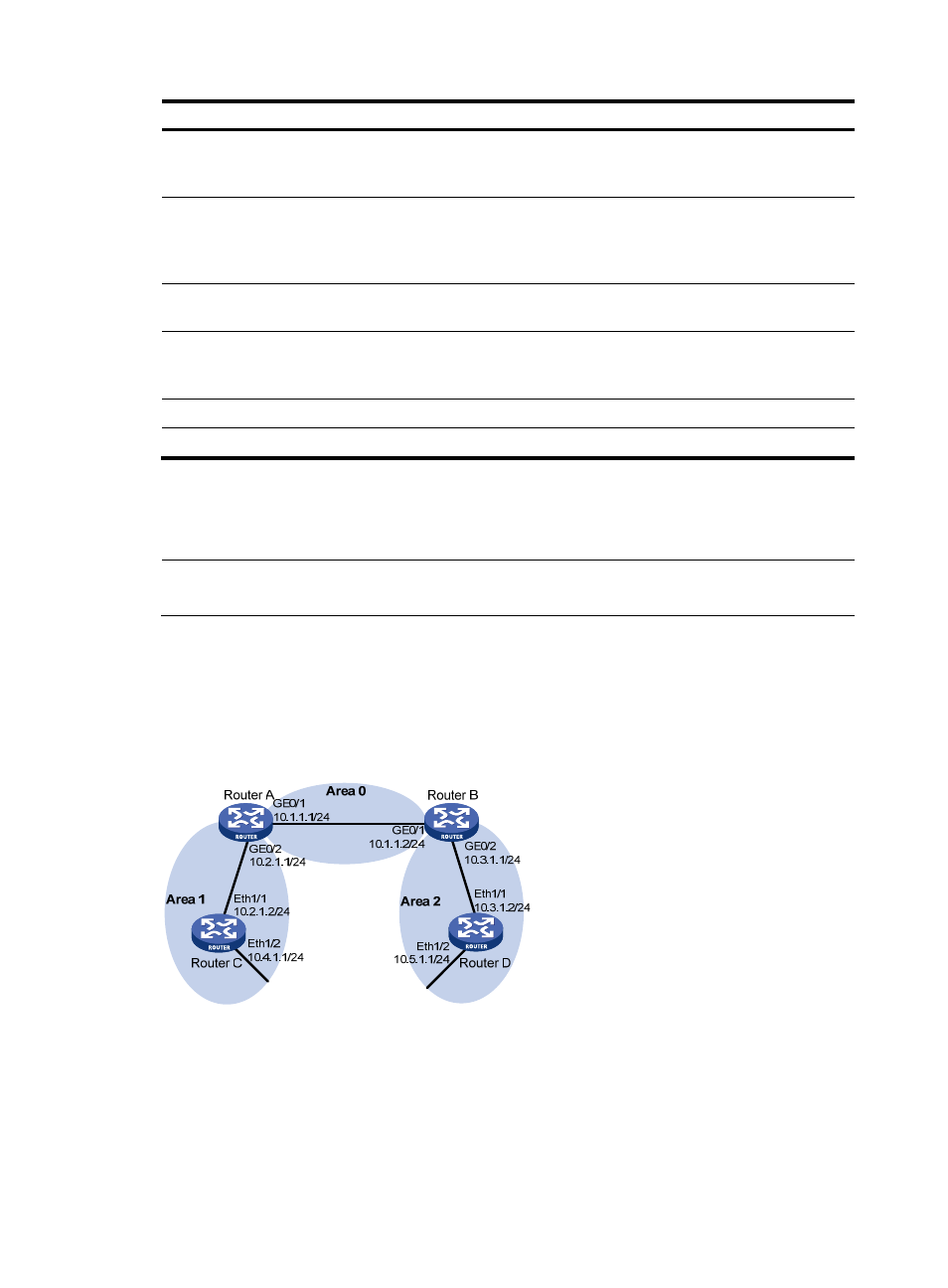Configuring ospf basic functions at the cli, Network requirements, Configuration procedure – H3C Technologies H3C SecPath F1000-E User Manual
Page 441

416
Task Command
Remarks
Display OSPF error information.
display ospf [ process-id ] error [ |
{ begin | exclude | include }
regular-expression ]
Available in any view
Display OSPF ASBR summarization
information.
display ospf [ process-id ]
asbr-summary [ ip-address { mask |
mask-length } ] [ | { begin | exclude |
include } regular-expression ]
Available in any view
Display the global router ID.
display router id [ | { begin | exclude
| include } regular-expression ]
Available in any view
Reset OSPF counters.
reset ospf [ process-id ] counters
[ neighbor [ interface-type
interface-number ] [ router-id ] ]
Available in any view
Reset an OSPF process.
reset ospf [ process-id ] process
Available in user view
Re-enable OSPF route redistribution. reset ospf [ process-id ] redistribution Available in user view
Configuring OSPF basic functions at the CLI
NOTE:
In this configuration example, either Router A or Router B is the SecPath firewall.
Network requirements
As shown in
, all routers run OSPF. The AS is split into three areas, in which, Router A and
Router B act as ABRs.
After configuration, all routers can learn routes to every network segment in the AS.
Figure 267 Network diagram
Configuration procedure
1.
Configure IP addresses for interfaces. (Details not shown)
2.
Configure OSPF basic functions:
# Configure Router A.
<RouterA> system-view
[RouterA] ospf